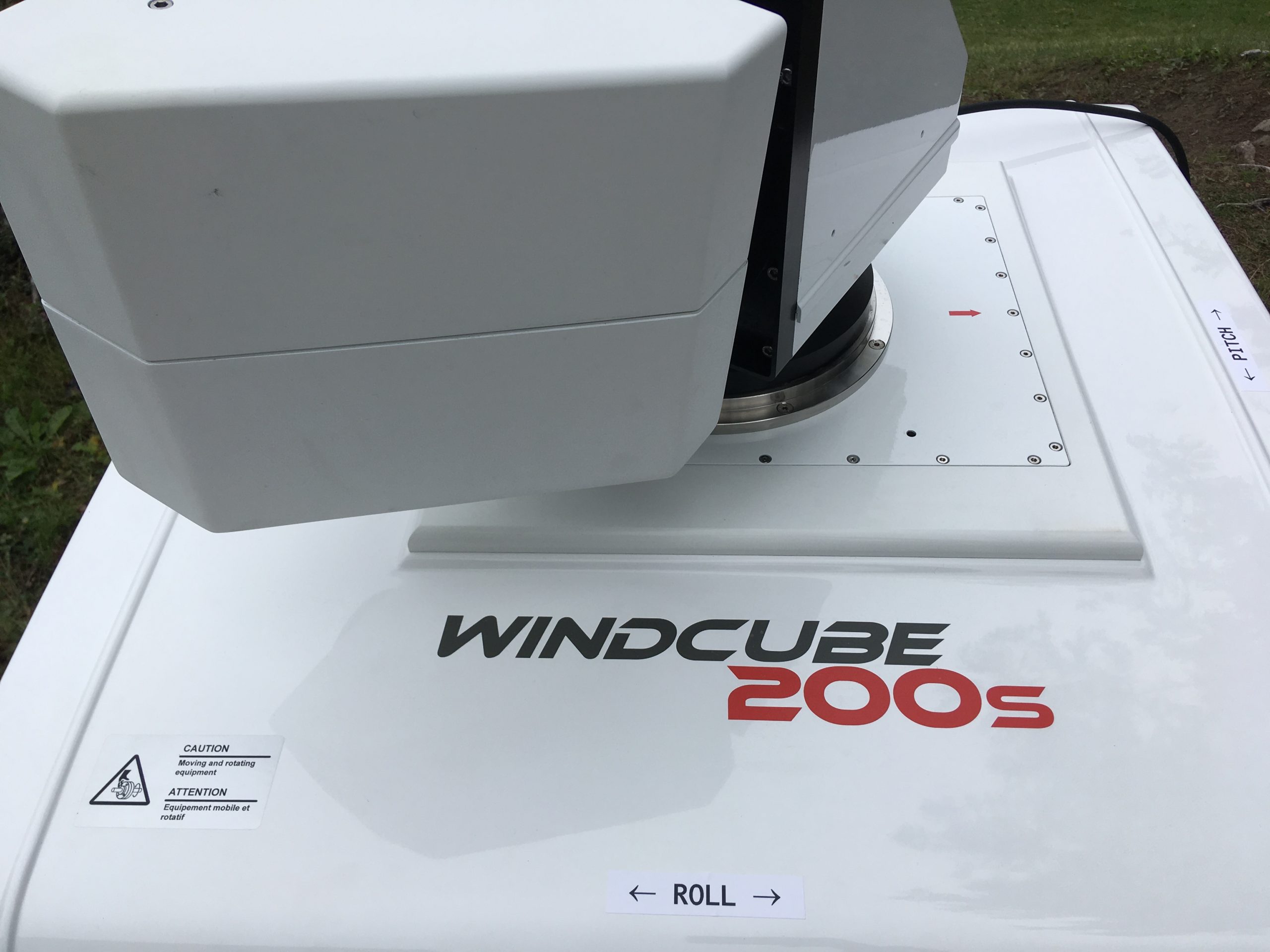Nergica recently acquired a Windcube 200S 3D lidar produced by the manufacturer Leosphere (a Vaisala company). Laser and lidar (acronym for “light detection and ranging”) are remote sensing techniques based on the property analysis of a light beam travelling back to its emitter.
More specifically, a lidar sends out several infrared beams that bounce off of aerosols in the air such as water droplets, dust, pollution, etc. The instrument detects the reflected light and, by measuring the Doppler effect, deducts the velocity of moving aerosols.
Installed at its research site, Nergica’s 3D lidar has a range of 6 km and can read radial wind speeds over a full 360° and scan at elevation angles ranging from -10° to 90°. Our expert team will notably use the instrument in three projects being carried out in the framework of the Opten research program and on the basis of the following three applications:
- Microgrid applications
The lidar collects very short-term (i.e. 1-minute) forecasts for parameters such as amplitude, wind speed and wind direction. It optimizes the management of energy storage systems for microgrids such as flywheels. It anticipates gusts (updrafts and downdrafts) that can affect the production of turbines connected to the microgrid. Lidar also helps fine-tune the operational management of diesel generators and, by the same token, the resilience of the microgrid by limiting fluctuations in frequency.
- Wind farm applications
The 3D lidar can be used to study mechanical loads on the entire turbine rotor rather than only according to a specific vertical axis. In other words, we can quantify – to an accuracy of 1 m – the wind force over the entire rotor-swept area. The instrument can also be used to analyze vortices, i.e. the turbulent air created downwind of a turbine.
- Meteorological applications
Thanks to additional options that we acquired through a specialized software program (Wind Aerosol lidar software), we can measure numerous parameters characterizing the atmospheric layer, detect aerosols in a specific direction, or establish correlations with our met mast readings.
The renewable energy industry can also benefit from the capabilities of this cutting-edge piece of equipment. Would your organization like to capitalize on this opportunity? If so, don’t hesitate to get in touch with Nergica today. We will configure the equipment according to your needs.
We should point out that the 3D lidar was funded by the Canada Foundation for Innovation (CFI) and Quebec’s Ministry of Economy and Innovation.

